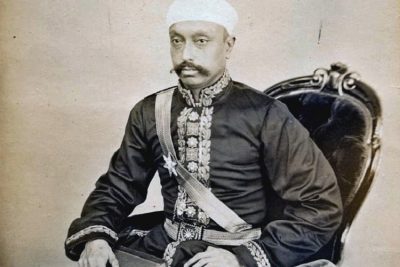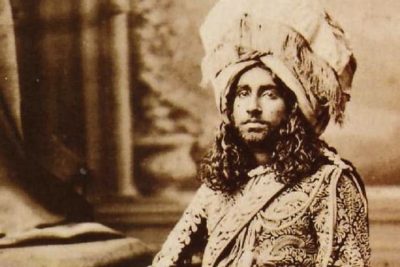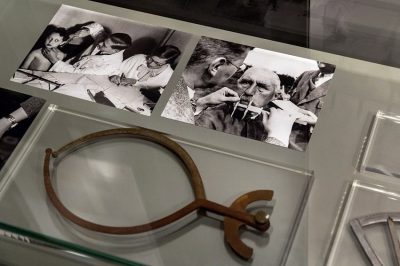Horrors of 1971 Bangladesh Genocide Chronicled by Anam Zakaria Through a More Personal Lens
Share
 The year 1971 is of great importance not just for Bangladesh and Pakistan, but also for India. It changed the political climate in the subcontinent for years to come. We have enough political accounts that serve the state narrative of the three nations involved, but very few to document the horrors experienced by civilians. In her book, 1971: A People’s History from Bangladesh, Pakistan and India, Anam Zakaria, oral historian and author explores what it means to belong, drawing on harrowing accounts of lives tangled in the struggle for freedom.
The year 1971 is of great importance not just for Bangladesh and Pakistan, but also for India. It changed the political climate in the subcontinent for years to come. We have enough political accounts that serve the state narrative of the three nations involved, but very few to document the horrors experienced by civilians. In her book, 1971: A People’s History from Bangladesh, Pakistan and India, Anam Zakaria, oral historian and author explores what it means to belong, drawing on harrowing accounts of lives tangled in the struggle for freedom.
By examining the social narrative, Zakaria creates a kaleidoscopic collage of memories that are haunting, personal and sincere.
Bangladesh didn’t gain Independence at the stroke of midnight like its neighbours; India and Pakistan under the Indian Independence Act of 1947. Partition didn’t give birth to Bangladesh rather it was the war of 1971. The Liberation War as known in Bangladesh, between the two wings of Pakistan; East Pakistan and West Pakistan culminated into dismemberment of the former wing into a new state- Bangladesh; The Country of Bengal.
The fight for liberation officially began in March 1971 as a response to the Operation Searchlight carried out by the military regime of West Pakistan to curb the voices of nationalist Bengali intelligentsia. But the seeds for the movement were sown soon after Partition as the Language Movement. This movement was headed by the intellectuals of the erstwhile East Pakistan rallying against the repression of the cultural and social identity by an authoritarian government.
“The language issue was a catalyst indeed and, in hindsight, is popularly understood to be a major source of rupture.”
In Chapter 5 of the book, Zakaria interviews Bangladeshi academics and historians who lived through the massacre.
“Through the following interviews, this chapter seeks to explore the more personal impact these events had on the lives of East Pakistanis, and the nuanced ways in which they transformed from Pakistanis to Bangladeshis before the latter even took birth.”
One of the interviewees is a historian and writer, Professor Muntassir Mamoon of Dhaka University. Mamoon as a young man in the 1960s closely observed the political shift of powers in the years leading to the war. He talks about incidents that yielded his transformation from a patriotic Pakistani to a supporter and member of the Bangladesh movement. Along with the other writers, Mamoon helped foreign journalists document the carnage as it took place.
“Mamoon had dedicated his life to archiving, writing and teaching about 1971, while also advocating for war crimes trials in Bangladesh. He was committed to ensuring that the memory of 1971 was not forgotten.”
In his efforts to not let the memories of the genocide be erased from the public mind, he founded the genocide and torture archive and museum in Khulna district of Bangladesh. In Mamoon’s museum, one of its kinds in South Asia, are rare collections of photographs, paintings and relics showcasing the horrific realities of the ninth month-long butchery.
“Before we left, Mamoon gave us a tour of the museum, showing us photographs of vultures picking on the bodies of Bengali men and women, images of dead children, their eyes popping out, their legs bitten off by animals.“
Of her tour around the museum, Zakaria comments on drawings by young school students depicting their understanding of the war and the Bengal armed resistance. These drawings evoke strong feelings of loss, pride and victory. Observing this she says Mamoon’s mission to keep the flame of memories burning has been accomplished.
“These were the vivid memories, the photographs, the clothes, the rooms and the spaces, which kept 1971 alive. These were the expressions of the war, the living memory of 1971. There would be no letting go.”
Anam Zakaria as an oral historian undertook great efforts to understand and document the personal narratives and sentiments of the subjects of the 1971 movement. All her efforts helped her deliver a perspective in 1971: A People’s History from Bangladesh, Pakistan and India that is often overshadowed by the state interests.
 1971- A People’s History from Bangladesh, Pakistan and India | By Anam Zakaria
1971- A People’s History from Bangladesh, Pakistan and India | By Anam Zakaria
“Through a personal journey, she juxtaposes state narratives with people’s history on the ground, bringing forth the nuanced experiences of those who lived through the war. Using intergenerational interviews, textbook analyses, visits to schools and travels to museums and sites commemorating 1971, Zakaria explores the ways in which 1971 is remembered and forgotten across countries, generations and communities.”













